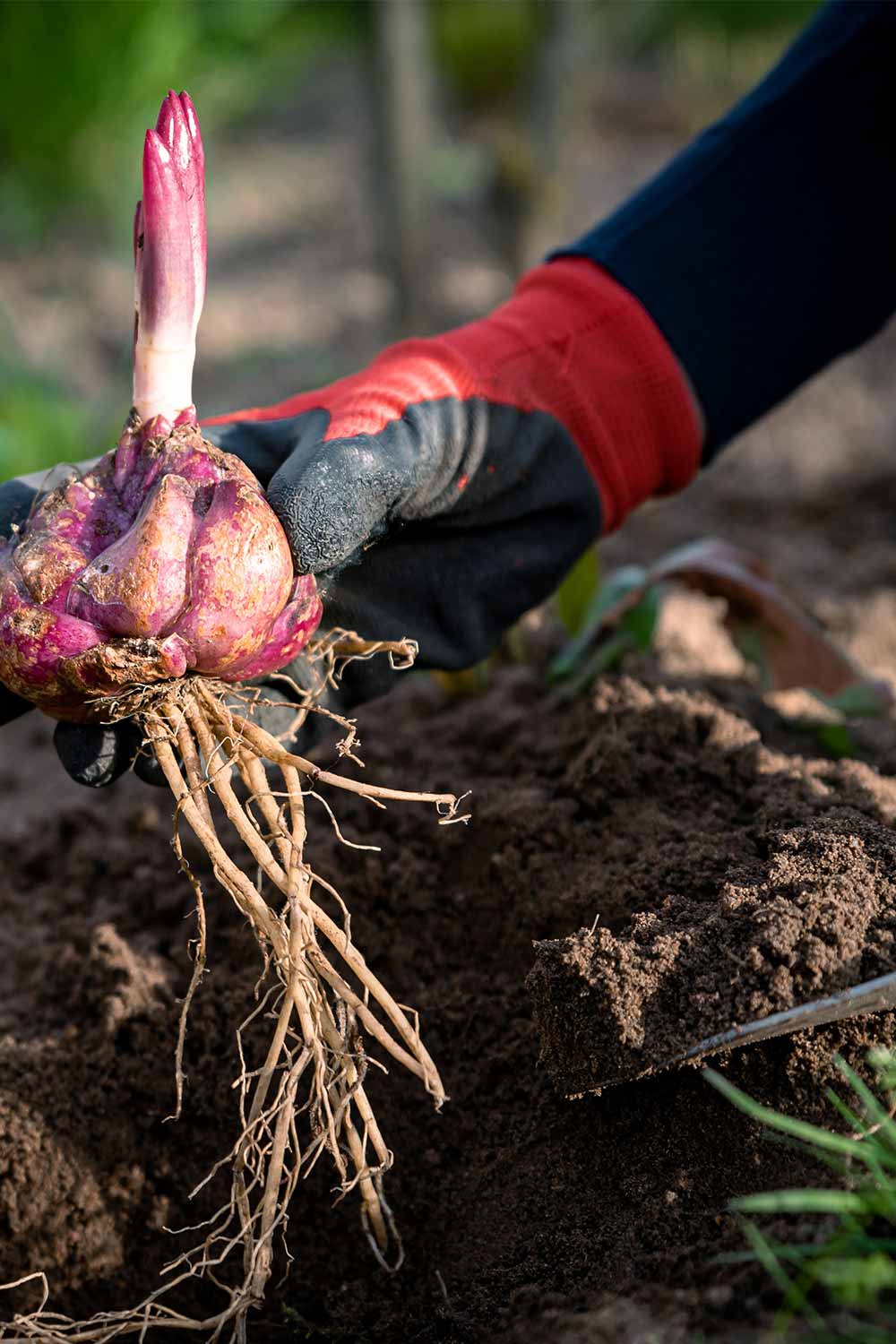Planting Hyacinth Bulbs: A Guide To Stunning Blooms

Table of Contents
Choosing the Right Hyacinth Bulbs
The foundation of successful hyacinth cultivation lies in selecting top-quality bulbs. Choosing healthy, firm bulbs significantly increases your chances of bountiful blooms. Consider these factors when making your selection:
- Health and Firmness: Look for bulbs that are plump and firm to the touch. Avoid those that are soft, shriveled, or show signs of damage, mold, or disease. A healthy hyacinth bulb is your guarantee of a beautiful flower.
- Bulb Size: Larger bulbs generally produce larger and more impressive flower spikes. While smaller bulbs will still bloom, larger ones offer more visual impact.
- Variety and Bloom Time: Hyacinths come in a wide array of colors and bloom times. Early, mid, and late season varieties allow you to extend your hyacinth enjoyment throughout spring. Consider your garden's aesthetic and the overall bloom schedule when choosing your hyacinth bulb varieties. Popular choices include 'Pink Pearl,' 'Blue Jacket,' and 'Carnegie.'
Preparing for Planting Hyacinth Bulbs
Proper soil preparation is critical for healthy hyacinth growth. Hyacinth bulbs thrive in specific conditions, so understanding these requirements will greatly improve your chances of success.
- Ideal Soil Conditions: Hyacinths prefer well-drained, fertile soil. Heavy clay soils should be amended with compost or other organic matter to improve drainage and aeration. Poor drainage can lead to rot, a common problem for hyacinth bulbs.
- Planting Time: The best time to plant hyacinth bulbs for spring blooms is in the fall, typically six to eight weeks before the ground freezes. This allows the bulbs to establish roots before winter arrives.
- Sunlight and Location: Choose a location that receives at least six hours of sunlight per day. This ensures sufficient energy for robust growth and abundant flowering.
Planting Hyacinth Bulbs: A Step-by-Step Guide
Once you've chosen your bulbs and prepared your planting area, follow these steps for successful planting:
- Dig the Hole: Dig a hole approximately 6-8 inches deep and wide enough to comfortably accommodate the bulb.
- Positioning the Bulb: Place the bulb in the hole with the pointed end facing upwards. The pointed end indicates the direction of growth.
- Backfilling: Gently cover the bulb with soil, ensuring it's completely buried. Firm the soil gently around the bulb.
- Watering: Water gently after planting to settle the soil and aid root establishment. Avoid overwatering, as this can lead to rotting.
[Insert image or illustration of planting hyacinth bulbs here]
Aftercare for Hyacinth Bulbs
While planting hyacinth bulbs is relatively easy, proper aftercare is essential for maximizing bloom potential.
- Watering: Water regularly, especially during dry periods. Aim to keep the soil consistently moist but not waterlogged. Overwatering is a common cause of hyacinth bulb rot.
- Fertilizing: While not strictly necessary, a balanced fertilizer formulated for flowering bulbs can enhance bloom size and color. Apply fertilizer according to package directions.
- Pest and Disease Control: Monitor your hyacinth plants for signs of pests or diseases. Address any issues promptly using appropriate organic or chemical controls. Early detection and treatment are crucial.
Forcing Hyacinth Bulbs Indoors
Enjoy the beauty of hyacinths even during the winter months by forcing them to bloom indoors.
- Choosing Bulbs: Select high-quality hyacinth bulbs specifically intended for indoor forcing. These are usually larger and healthier.
- Planting and Care: Plant the bulbs in well-draining potting mix, following the same planting instructions as outdoor planting, but using suitable indoor containers.
- Chilling Period: Keep the planted bulbs in a cool, dark place (around 40-50°F) for several weeks to initiate root growth and trigger flowering. This chilling period mimics the natural winter dormancy.
Conclusion
Successfully planting hyacinth bulbs involves choosing healthy bulbs, preparing the soil adequately, and providing appropriate aftercare. By following the steps outlined in this guide, you can cultivate vibrant, fragrant hyacinths that brighten your garden or indoor spaces. Growing hyacinths is a rewarding experience, offering a stunning display of color and a captivating aroma. The joy of nurturing these bulbs from planting to bloom is truly unforgettable. Start your hyacinth bulb planting journey today and experience the magic of spring blooms!

Featured Posts
-
 Kelly Smith Denies Involvement In Joshlins Vanishing After Accusation
May 29, 2025
Kelly Smith Denies Involvement In Joshlins Vanishing After Accusation
May 29, 2025 -
 El Chapos Son Us Drops Death Penalty Pursuit
May 29, 2025
El Chapos Son Us Drops Death Penalty Pursuit
May 29, 2025 -
 Harry Potter Tv Series Avoiding Past Mistakes
May 29, 2025
Harry Potter Tv Series Avoiding Past Mistakes
May 29, 2025 -
 Pcc Rokita I Dywidenda Wplyw Na Akcje I Inwestorow
May 29, 2025
Pcc Rokita I Dywidenda Wplyw Na Akcje I Inwestorow
May 29, 2025 -
 Lombaard And Letoni Implicated In Joshlin Sale Smith Issues Denial
May 29, 2025
Lombaard And Letoni Implicated In Joshlin Sale Smith Issues Denial
May 29, 2025
Latest Posts
-
 Grigor Dimitrov Vliyanieto Na Kontuziyata Vrkhu Karierata Mu
May 31, 2025
Grigor Dimitrov Vliyanieto Na Kontuziyata Vrkhu Karierata Mu
May 31, 2025 -
 Kontuziyata Na Grigor Dimitrov Aktualna Informatsiya I Analiz
May 31, 2025
Kontuziyata Na Grigor Dimitrov Aktualna Informatsiya I Analiz
May 31, 2025 -
 Trumps Uncertainty What Made Him Question Elon Musk
May 31, 2025
Trumps Uncertainty What Made Him Question Elon Musk
May 31, 2025 -
 Uncertainty And The End Trumps Doubts About Elon Before The Break
May 31, 2025
Uncertainty And The End Trumps Doubts About Elon Before The Break
May 31, 2025 -
 Everything Revealed In The Star Trek Strange New Worlds Season 3 Teaser
May 31, 2025
Everything Revealed In The Star Trek Strange New Worlds Season 3 Teaser
May 31, 2025
